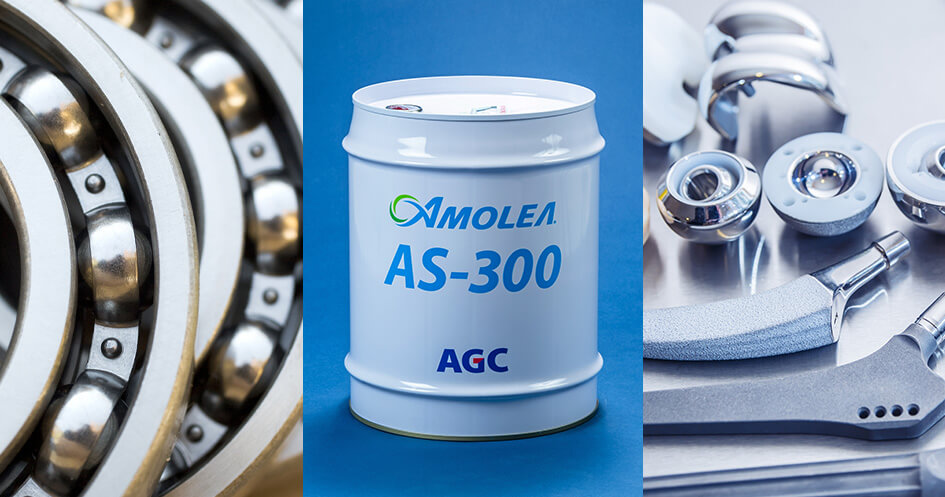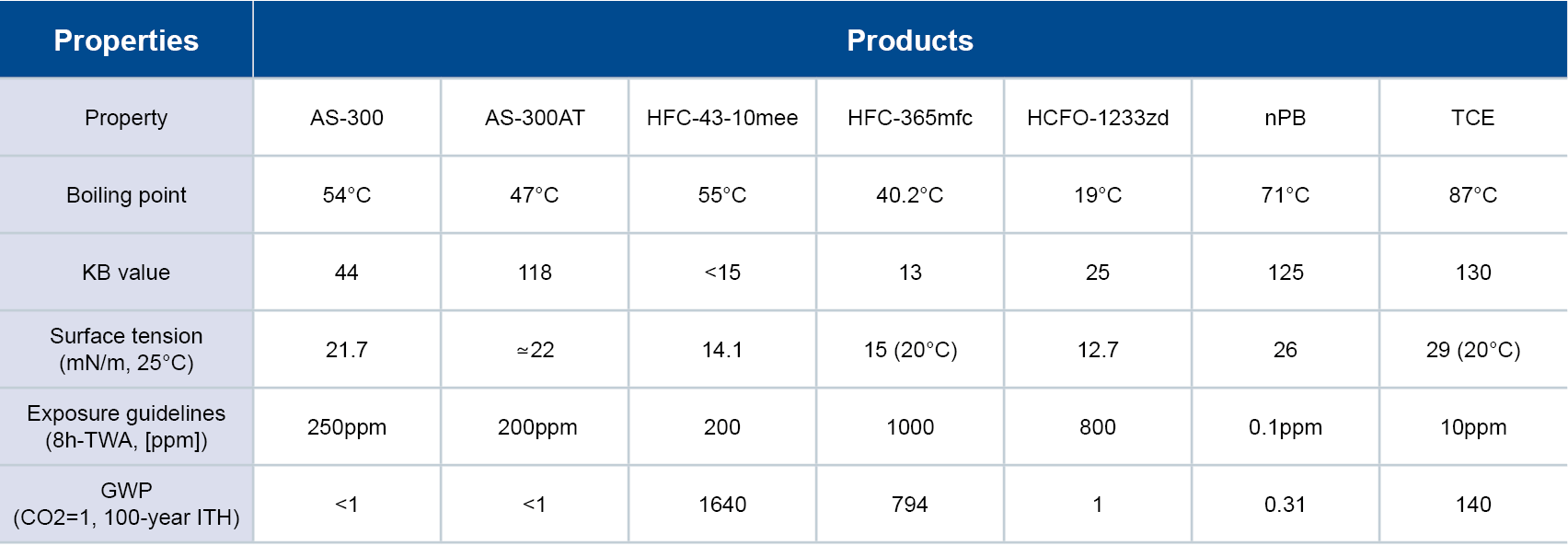Next-Gen HCFO Precision Solvents Receive SNAP Approval

Reading Time: 2 minutes
Our new SNAP-approved AMOLEA™ AS-300 and AS-300AT solvents are helping to lead the way in providing environmentally friendly cleaning alternatives. They are not categorized as hazardous air pollutants, have a global warming potential of less than one and have higher exposure limits.
They can be used in a vapor degreaser and are ideal replacements for HFC and low-boiling-point HCFO solvents, n-propyl bromide (nPB or 1-BP) and trichloroethylene.
The U.S. Environmental Protection Agency SNAP program now lists both of these solvents as acceptable for cleaning electronics, metals and coating diluents, as well as precision cleaning.
Importance of HCFO Precision Cleaning Solvents
The HCFO precision cleaning solvents we produce are important to many industries, including aerospace, automotive and medical devices. This is because their products and components need to be properly cleaned and degreased before assembly or shipment. However, many of the types of cleaners long used in these industries have unfavorable health, safety, and environmental (HSE) characteristics, and are now regulated or scrutinized by the U.S. government.
For example, hydrofluorocarbons (HFCs) are commonly used for refrigeration, air conditioning, insulation for buildings and aerosols have very high global warming potential (GWP) and are being gradually phased out globally as we speak. The widespread use of these solvents around the world is considered a factor in climate change.
To reach their sustainability goals, these industries need more environmentally friendly cleaning solutions such as fluorinated solvents and aqueous cleaning products. That’s where AGC can help. Fluorinated cleaning solvents (fluorosolvents) can clean dirt, oil, fingerprints, solder paste residue, electronics flux and other types of contaminants from expensive parts and components.
The EPA considers AS-300 and AS-300AT to have more favorable HSE characteristics than older cleaners. This is because GWP is significantly less (<1) and also flammability and toxicity risks are comparable to or lower than that of other available substitutes in the same end-use.
Aqueous cleaners, meanwhile, are water-based solvents that have to be combined with additives and treated to become more acidic or basic to work effectively. In addition, they require more equipment footprint, cycle time, and energy. So, while fluorosolvent cleaners can have a higher purchase price, they are easier to use and extremely effective.
Our AMOLEA AS-300 and AS-300AT solvents are effective replacements for other cleaning solvents because they have:
- Advantageous boiling points vs low boiling point HCFO solvents
- Superior solvency with Kb value of 44 and 118 respectively
- Favorable health, safety and environment profiles
EPA SNAP Program
The EPA’s SNAP program, officially called the Significant New Alternatives Policy, is designed to review and certify substitute chemicals and technologies that are more environmentally friendly than their predecessors. This encompasses several different sectors and industries including adhesives, coatings, inks, aerosols, cleaning solvents, fire suppression and explosion protection, foam blowing agents, sterilant, and refrigeration and air conditioning.
SNAP was established under section 612 of the Clean Air Act. This program constantly updates the list of certain substitutes when a new product is deemed to pose less overall risk to humans and the environment. It is something we take very seriously.
Some of the characteristics the EPA looks at when evaluating substitutes are ozone depletion potential, global warming potential, toxicity, flammability, occupational and consumer health, local air quality and ecosystem effects.
We are proud that these solvents are now officially SNAP-approved. Our goal is to develop the highest quality products, with safety and the environment in mind.
For more information about AMOLEA AS-300 and AS-300AT, contact an AGC product expert here.
 English
English 